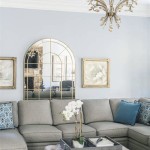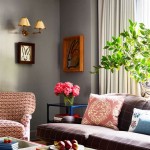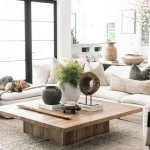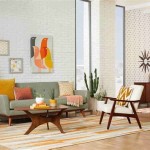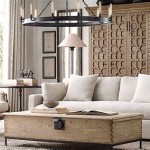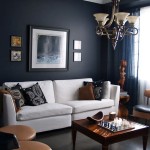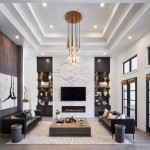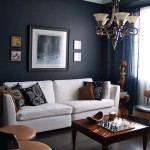Choosing the Best Accent Wall Color for Your Living Room
The living room serves as a central hub for relaxation, entertainment, and socializing. Consequently, the aesthetic choices within this space significantly impact the overall ambiance and perceived comfort. Among the various design elements, the accent wall holds considerable power. A well-chosen accent wall can dramatically transform a living room, adding depth, visual interest, and a focal point that draws the eye. Selecting the "best" color for an accent wall, however, requires careful consideration of several factors, including the existing color palette, the room's size and lighting conditions, and the desired mood.
An accent wall, by definition, is a wall painted or decorated differently from the other walls in the room. This difference creates visual contrast and highlights a specific area. Accent walls are not merely decorative; they can also serve functional purposes, such as visually expanding a small space, defining a specific zone within a larger room, or concealing architectural imperfections. The strategic use of color is paramount in achieving these goals.
Analyzing the Existing Color Palette
The most crucial step in choosing an accent wall color is to analyze the existing color palette of the living room. This includes the colors of the other walls, the flooring, the furniture, and any prominent accessories. The accent wall color should complement and enhance these existing colors, rather than clash with them. A harmonious color scheme creates a sense of balance and visual coherence.
One common approach is to select a color from the existing palette and choose a darker or more saturated shade of that color for the accent wall. For example, if the living room walls are painted in a light beige, a deeper tan or a warm brown could serve as an effective accent color. This creates a subtle contrast while maintaining a cohesive look. Another strategy is to choose a complementary color that sits opposite the dominant color on the color wheel. Complementary colors create a vibrant and visually stimulating effect. For instance, if the living room is primarily blue, an orange accent wall could provide a striking contrast.
When working with neutral color schemes, the possibilities for accent wall colors are more expansive. Grays, whites, and beiges provide a versatile backdrop that can accommodate a wide range of accent colors. In such cases, the choice often depends on the desired mood and personality of the space. A bold, saturated color like turquoise or emerald green can inject energy and vibrancy, while a muted tone like dusty rose or sage green can create a more calming and sophisticated atmosphere.
Furthermore, it is important to consider the undertones of the existing colors. Undertones are the subtle hues that underlie the main color and can affect how different colors interact with each other. For example, a beige with warm undertones (yellow or orange) will pair well with warm accent colors like terracotta or mustard yellow, while a beige with cool undertones (gray or blue) will look better with cool accent colors like silver or lavender. Ignoring undertones can lead to a discordant and visually jarring effect.
Considering Room Size and Lighting
The size and lighting conditions of the living room play a significant role in determining the most suitable accent wall color. Dark colors tend to absorb light, making a room appear smaller and more intimate. Therefore, in a small living room with limited natural light, using a dark accent wall color can create a claustrophobic feeling. Conversely, in a large, well-lit living room, a dark accent wall can add depth and visual interest without overwhelming the space.
Light colors, on the other hand, reflect light and can make a room appear larger and brighter. In a small living room, a light-colored accent wall can help to open up the space and create a more airy and inviting atmosphere. However, in a large living room with abundant natural light, a light-colored accent wall may not provide enough visual contrast and could appear washed out.
The type of lighting in the room also needs to be taken into account. Natural light has a different effect on colors than artificial light. Natural light tends to bring out the true colors, while artificial light can alter the appearance of colors. Incandescent lighting, for example, tends to cast a warm yellow glow, while fluorescent lighting tends to cast a cool blue glow. These lighting effects can impact how the accent wall color appears at different times of the day.
To accurately assess how a potential accent wall color will look in the living room, it is advisable to test the color in different lighting conditions. This can be done by painting a small sample of the color on the wall and observing it at different times of the day and under different types of lighting. This will help to ensure that the chosen color is suitable for the room and achieves the desired effect.
Achieving the Desired Mood and Personality
The choice of accent wall color should also reflect the desired mood and personality of the living room. Different colors evoke different emotions and can create different atmospheres. For example, warm colors like red, orange, and yellow are associated with energy, excitement, and passion. These colors can create a stimulating and inviting atmosphere, but they can also be overwhelming if used excessively.
Cool colors like blue, green, and purple are associated with calmness, serenity, and relaxation. These colors can create a soothing and tranquil atmosphere, but they can also be perceived as cold or sterile if not balanced with warmer tones. Neutral colors like gray, white, and beige are associated with sophistication, elegance, and simplicity. These colors provide a versatile backdrop that can be adapted to a wide range of styles and moods.
Consider the purpose of the living room when selecting an accent wall color. If the living room is primarily used for relaxation and entertainment, a calming and soothing color like blue or green may be a good choice. If the living room is used for socializing and entertaining guests, a more vibrant and energetic color like red or orange could be more appropriate. If the living room is used for a variety of purposes, a neutral color with pops of color in the accessories can provide a flexible and adaptable solution.
The personality of the homeowner should also be reflected in the choice of accent wall color. The living room is a personal space, and the colors used should be a reflection of the individual's tastes and preferences. If the homeowner is drawn to bold and vibrant colors, they should not be afraid to experiment with them. If the homeowner prefers a more subtle and understated look, they can opt for more muted and neutral tones. Ultimately, the goal is to create a living room that is both aesthetically pleasing and personally meaningful.
Beyond specific colors, the finish of the paint also contributes to the overall impact of the accent wall. Matte finishes absorb light, creating a soft and velvety appearance. They are ideal for hiding imperfections in the wall and creating a more subdued and sophisticated look. Glossy finishes reflect light, creating a shiny and reflective surface. They are ideal for adding drama and visual interest, but they can also highlight imperfections in the wall.
Semi-gloss and eggshell finishes offer a balance between matte and glossy, providing a subtle sheen that is both durable and easy to clean. The choice of finish depends on the desired effect and the overall style of the living room. Consider the characteristics of each finish and select the one that best suits the needs and preferences of the homeowner.

Top 9 Accent Wall Colors To Add Dimension Your Space Decorilla Online Interior Design

The 35 Best Accent Wall Colors

30 Living Room Paint Colors Inspiration For An Inviting Space Beamin Moore
:max_bytes(150000):strip_icc()/warm-and-cozy-paint-colors-down-pipe-2f1db86467ff44f9a353672387c8dfba.jpg?strip=all)
15 Paint Colors That Will Make Your Home Feel Warm And Cozy

10 Best Paint Colours For Your Living Room Accent Wall Comfortable Dwelling

50 Best Living Room Paint Ideas Colors

The Best Neutral Paint Colors For Every Room Colorfully Behr

The Best Dark Statement Accent Wall Paint Colors For Your Home

18 Accent Wall Design Ideas For Any Room In Your Home

Accent Wall Ideas 32 Designs To Elevate Your Room S Style

